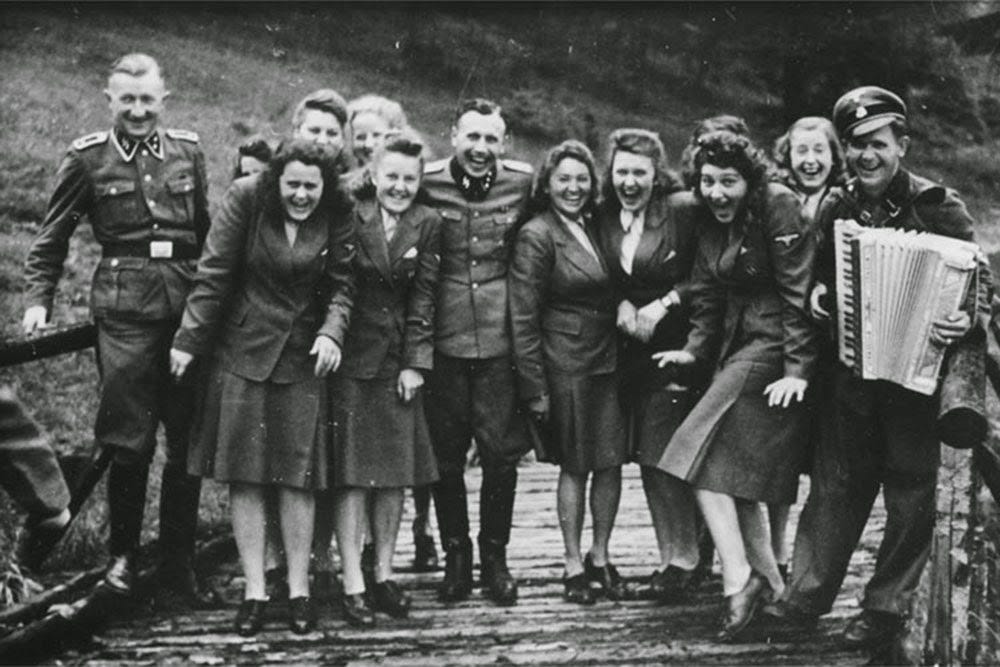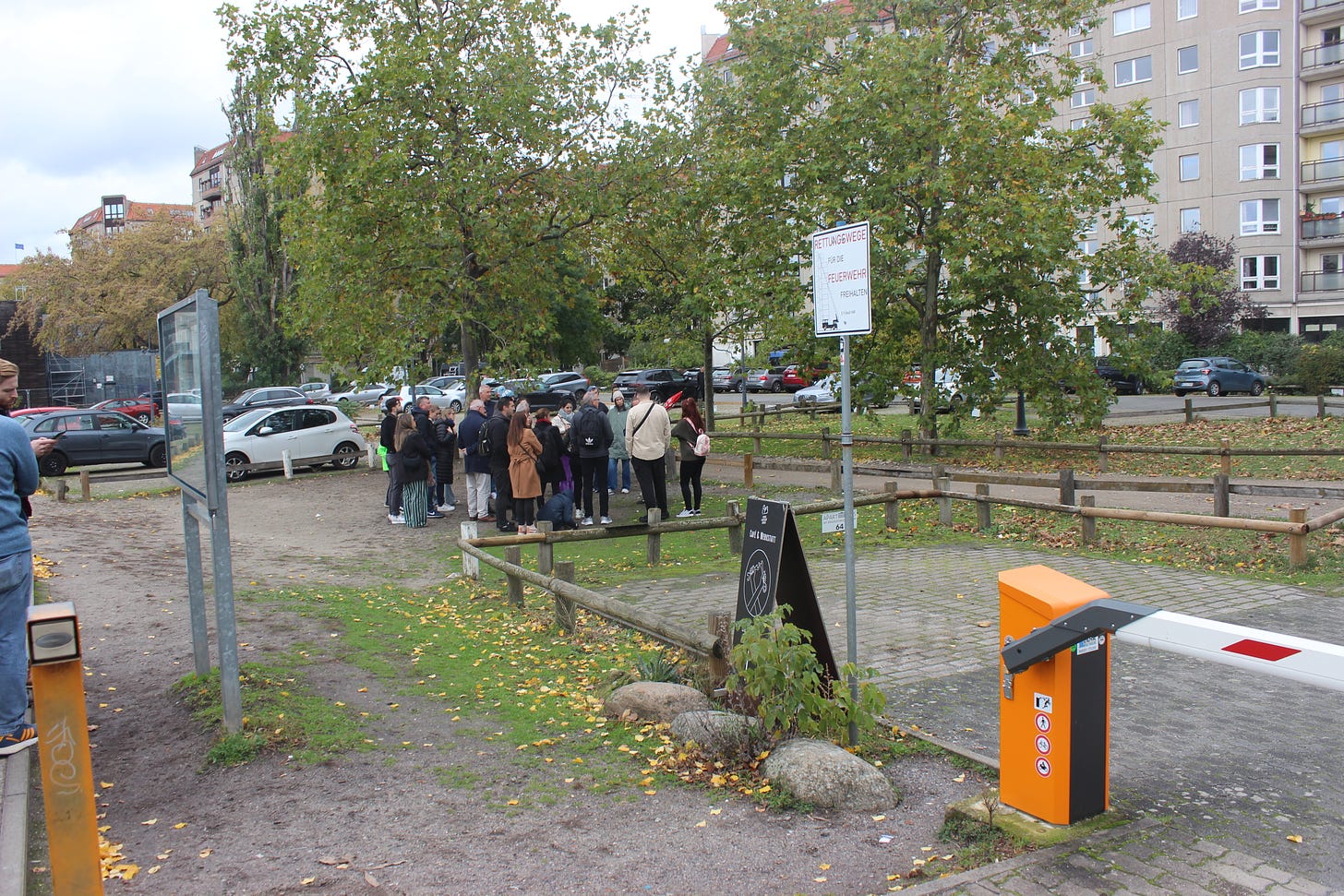Evil and the Lens of History
To learn from history, we must first understand how and why stories of the past are told.
Last night I watched the movie Downfall. Released in 2004, it tells the story of the last days of Adolph Hitler in his bunker, his suicide, and the actions of the people around him (many of whom also put a bullet in their own heads).
Many of you will recognize this movie through the numerous “Hitler rants” parody video memes from a scene from the movie, producing good comedic content (yes, it’s the juxtaposition that makes it work). My favorite of these is the one about Stevie Ray Vaughan’s tone.
I was prompted to watch this film by my recent trip to Berlin, which included a visit to the site of Hitler’s bunker, which is now a parking lot.
Overall, I think the movie is worth watching. It’s a compelling historical drama about a key inflection point in history. It’s based on the memoires of Hitler’s personal secretary, Traudl Junge, who figures prominently in the film. It depicts the actions of those in Hitler’s inner circle, from the notorious Joseph Goebbels and Heinrich Himmler to the obscure such as Junge and junior officers. And it shows Hitler as you would expect, brooding and delusional, railing against Jews and wrathful against his generals. But it also shows him emotional, even tender toward children and young people like Junge.
Criticism of the film largely centers on the question of whether it is appropriate to portray Hitler as anything other than pure evil. The German newspaper Bild asked, "Are we allowed to show the monster as a human being?" This question is separate from, but also begs, the question of whether this is an accurate portrayal of Hitler. If it were not, then such portrayal would make it a pro-Nazi propaganda film. I didn’t see criticism levied against accuracy of Hitler. So let’s presume it is fairly accurate. Is it appropriate?
To answer this begs yet another question: is evil necessarily monstruous. Think of archetype villians movies have given us, from the Wicked Witch of the East to Darth Vader to Voldemort. Their evil-ness is identified their appearance. They look evil. But that’s not necessarily reality. History is replete with accounts of bloodthirsty tyrants who were attentive fathers or generous, or even merciful.
Evil presents itself in many forms as philosophers and theologians tell us. So it makes no sense to me to reductively present evil only in prototypical form. Showing Hitler being kind toward children does not make him any less of a monster. What it tells us is that monsters can have smiles on their face even as they plot unspeakable acts. Acknowledging this reality makes us better prepared to confront horrors and depredation.
In Berlin I also visited the Topography of Terror, located on the site of the former SS headquarters. The museum tells the story, principally through photos, of the Nazi regime’s actions, focused on the SS’s role. Alongside photos of the horrors are ones showing SS officers doing mundane things like paperwork, eating dinner and socializing. This gets to Arendt’s concept of the “banality of evil” of the wicked coexisting with the ordinary.
They weren’t displayed at the museum, but some of the most arresting photos from that period are of SS death camp guards enjoying themselves in their off hours with wives, girlfriends, drink and song. Images of people doing mass killing humans on the clock and then partying on the weekends cuts to the heart of the psychological and sociological dimensions of evil.

Another stunning take-away from both the museum and the movie was seeing how many of these Nazi officers lived long lives. Some spent time in Allied prisons and were later released. But they were able to live as ordinary citizens into their golden years. Can there be redemptive justice for a Nazi? has been the core question in the debate over de-nazification for decades.
Traudl Junge, Hitler’s secretary, lived until the age of 81, dying in 2002. After the war she was detained, interrogated and released. She was assessed as being too young to be held accountable for her involvement.
Downfall ends with Junge’s introspection of her struggle with complicity. She recounts how years later she learned of the story of Sophie Scholl, a German student who led internal resistance to the Nazis but was discovered and executed. On screen, Junge says:
“I could see that she had been born the same year as I, and that she had been executed the same year I entered into Hitler's service. And, at that moment, I really realised that it was no excuse that I had been so young. I could perhaps have tried to find out about things.”
How does this inform our debates today? Many call the Chinese Communist Party evil. But is this judgment based on behavior or essence? Many of its actions are easily categorized as evil. But none of its behaviors are exclusive to China. Is it inherently evil because it is a communist party? China has more billionaires than any country. Is it even communist any more?
The CCP has 98 million members, only eight percent of the country’s population. But 98 million is not a small number; it would be the 16th biggest country in the world. It is right to reflexively label each member evil? How many joined only because it’s the best way to get ahead in their field (medicine, science, filmmaking)? Should the U.S. make public policy based on whether a person is a CCP member? Are they inherently complicit? What would Traudl Junge say?
I strongly recommend new Masha Gessen piece in the New Yorker, entitled “In the Shadow of the Holocaust: How the politics of memory in Europe obscures what we see in Israel and Gaza today.” They frame their piece around her visits to sites of memory in Berlin that I also visited: the Memorials to the Murdered Jews of Europe, Hitler’s bunker site, the Reichstag, the Topography of Terror. They talk about the ways that remembrance of the Holocaust can be weaponized for a political agenda or distorted to sell nationalist politics. They reflect on their own upbringing as a Jew in the Soviet Union and familial connection to Jews in the Warsaw Ghetto, and bring this perspective to bear on what people in Israel in Gaza are experiencing today.
Reading the critiques of Downfall about the portrayals of Hitler and his henchmen and Gessen’s piece about the Holocaust being (mis)used as a prism to argue the Israel-Hamas conflict, I am reminded that to history is not some fixed and immutable object, but an evolving and often contradicting set of stories we tell of the past to understand ourselves and our actions today.




